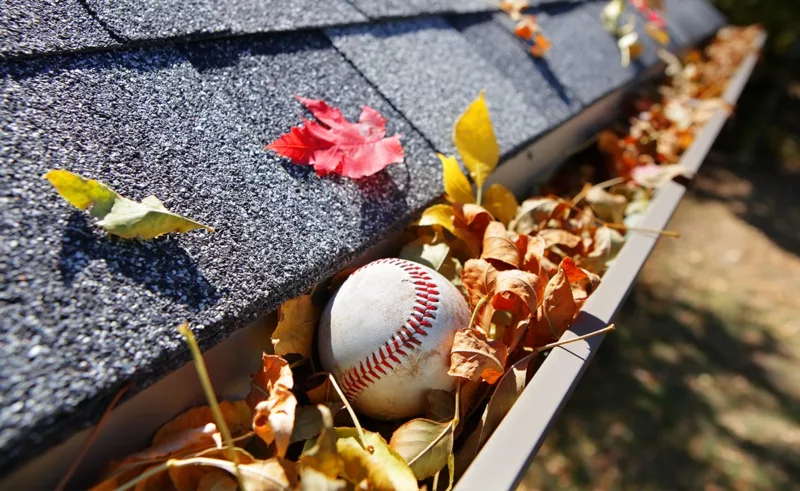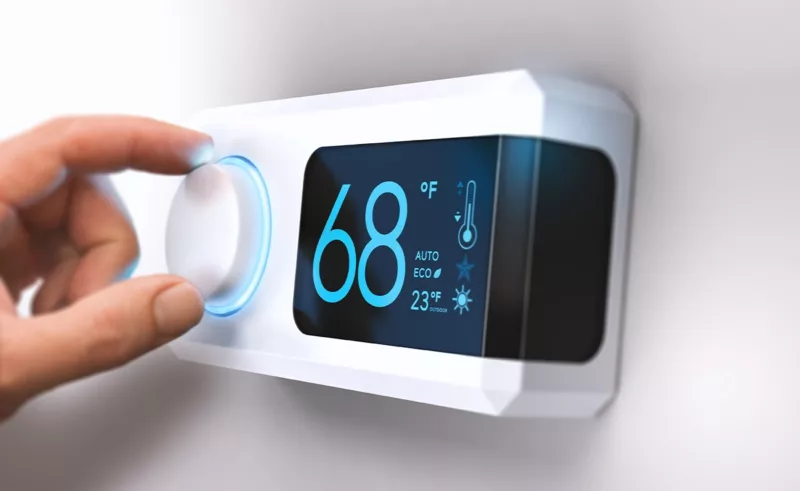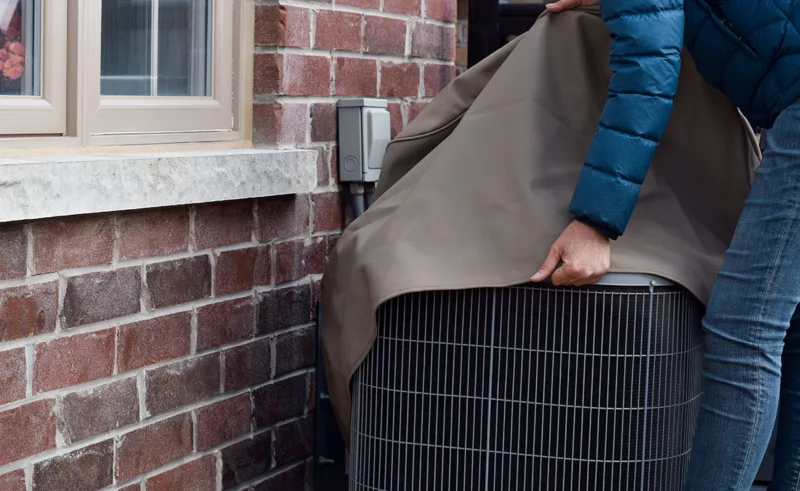
As the days grow shorter and the temperature begins to drop, it’s time to start thinking about preparing your home for the upcoming winter season. Winterizing your home not only ensures a cozy and comfortable living environment but can also help you save on energy bills and prevent potential damage. In this comprehensive guide, we at Ocean State Job Lot will walk you through a series of essential steps to winterize your home effectively and without breaking the bank.

Inspect and Seal Windows and Doors
One of the first places to start when winterizing your home is to inspect your windows and doors for any gaps, cracks, or leaks. Put your hand up against the windows and doors to feel if there’s a breeze coming through. These openings can let in cold drafts and cause your heating system to work harder, leading to increased energy costs. Seal any gaps with weather sealing or caulk to prevent heat from escaping and cold air from entering. Consider using draft stoppers at the base of doors to further prevent drafts.

Protect Pipes and Plumbing
Frozen pipes can lead to pipes that burst, causing immense water damage and repair costs to houses every winter. To prevent this, insulate exposed pipes in unheated areas like basements, attics, and any pipes that are nearest to the walls. Disconnect and drain outdoor hoses, and consider using faucet covers to protect outdoor spigots. On extremely cold nights, allow a small trickle of water to flow through faucets to prevent freezing. If your pipes do freeze, turn on the water to the frozen pipe, and heat the affected pipes with a hair dryer, electric blanket, or space heater (or any heating implement that is safe) until water flows through the pipes again. Know where your emergency pressure release valve or switch is located in an emergency, along with where and how to shut off all the water in the house if you go on vacation to escape the cold.

Insulate Your House
Proper insulation is a key factor in maintaining a warm and energy-efficient home during the winter months. Winter home maintenance starts with checking your home’s insulation and paying special attention to attics, basements, and crawl spaces. Adding or upgrading insulation can significantly reduce heat loss, make your home more comfortable, and reduce the strain on your heating system. Additionally, consider using thermal curtains to further insulate windows and keep cold air at bay.

Check Heating System
Before the chilly weather sets in, it’s crucial to ensure that your heating system is in optimal working condition. Schedule a professional inspection and maintenance for your furnace or heating system. Clean or replace filters as needed to improve efficiency and indoor air quality. If you have a fireplace or wood-burning stove, have the chimney cleaned, and carbon monoxide detector batteries inspected as well to ensure proper ventilation and fire safety. Enjoying the fireplace is one of the best parts of winter, so stock up on wood and enjoy!

Clean Your Gutters
A well-maintained roof and gutters are essential for winterizing your home. Clean out gutters and downspouts to ensure proper drainage, or water may damage your house’s foundation or freeze and rip the gutter off the roof. Trim overhanging tree branches that could potentially fall onto your roof under the weight of snow and ice. Inspect your roof for loose or damaged shingles and make necessary repairs to prevent leaks and water damage. Install a gutter fence to keep leaves and other debris out of your gutter.

Check for Cracks and Drafts
Inspect the exterior of your home for any cracks, gaps, or openings that could allow cold air to seep in. Areas in your house that are likely to let the heat escape include windows, doors, air conditioners, mail chutes, attics, and basements. Use exterior caulk or expanding foam to seal these gaps, particularly around areas where pipes, wires, and vents enter your home. Check the foundation of your house for cracks and water damage. Proper sealing not only keeps your home warm but also helps prevent unwanted pests from finding their way indoors.

Smart Thermostat
The biggest expense of the winter is the heating bill, so keeping that down should be a priority for all homeowners. Investing in a programmable thermostat can help you maintain a comfortable temperature while saving on energy costs. Program the thermostat to lower the temperature while you’re at work, on vacation, or sleeping, and raise it when you or your family are at home. This simple adjustment can result in significant savings over the course of the winter season.

Outdoor Winter Preparation
Start the outdoor preparation by covering up grills, air conditioners, furniture, and spigots to maintain those items. Bring chair and couch cushions indoors and drain any water from the spigots and automatic sprinkler systems if you have them. If you do have a sprinkler system, fill the pipes with antifreeze to prevent them from bursting. Inspect outdoor lighting for burnt-out bulbs and rotting cords. Consider using LED lights for a more energy-efficient form of lighting. If you have a pool, drain it and cover it up to keep it safe. Add outdoor covers to your air conditioners to prevent drafts from coming into your home.

Avoid the Nasty Spill
Leaving snow on your driveway, porch, stairs, and foyer can be a disaster waiting to happen. No one wants to slip and fall, causing possibly painful injuries. Snow can melt in the day and then freeze over at night or compact itself into snow that is much harder to remove. Shovel the snow when it is freshly fallen, and use ice melt to keep your property ice-free and safe for guests and family alike. If your driveway is concrete, use a salt-free ice melt to avoid damaging your driveway. For those concerned about the effects of pollution related to ice melt, use calcium chloride ice melt as an environmentally friendly alternative.
Be Proactive, Be Prepared
Winterizing your home is a proactive and wise step to ensure a comfortable and energy-efficient season. By following these essential tips, you can create a warm and cozy living space while also saving on energy costs, and preventing potential health and safety issues that cold weather can bring. Remember, a winterized home not only keeps you snug during the winter months, but also contributes to a more sustainable and environmentally friendly lifestyle. If you want to winterize your home, just know that you don’t have to break the bank to do so. Visit your local Ocean State Job Lot to bundle up at unbeatable prices.



